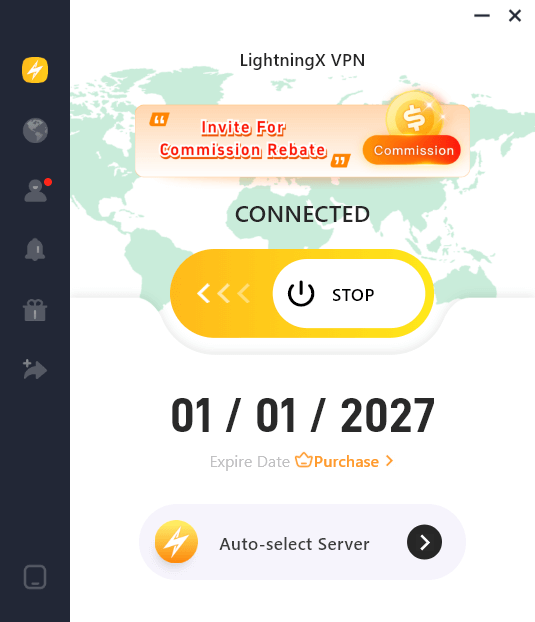The HTTP port is a key element in the connections of the Internet. Every time your browser goes to a website, it uses a port number. Without it, the request would never reach its destination. In this guide, we will explore what an HTTP port is, where to find it, and everything you should know about it.
What Is an HTTP Port?
Think of the internet like a large hotel with thousands of rooms. Every guest must knock on the right door to reach their room. An HTTP port works in the same way – it is the door through which data packets travel.
HTTP, or Hypertext Transfer Protocol, is the system browsers use to request and display web pages. But HTTP itself cannot find its way to a server. It needs a port number, which acts as an address for the server’s communication channel.
When your computer sends an HTTP request, the server listens for it on a particular port. If the server is not listening on that port, the connection will fail. This is why understanding HTTP ports is essential for troubleshooting and security.
Where to Find HTTP Port?
Most internet users can’t see port numbers because they are added automatically. When you type “http://example.com” in your browser, your system assumes it should connect through port 80, the default HTTP port.
However, developers, network administrators, and advanced users often need to locate or configure port settings manually. Here’s where you can check:
- Web browsers: If a site uses a non-standard port, you’ll see it in the address bar, for example, “http://example.com:8080.”
- Server configuration files: Web servers like Apache or Nginx allow admins to specify which ports to listen on.
- Firewall or router settings: Sometimes, ports are blocked or redirected for security reasons. Checking firewall logs can reveal if port 80 is allowed. Or check our guide to see how to turn off Windows Defender.
- Network tools: Running commands such as netstat or ss on a computer will list all active ports and services currently in use.
By understanding where to find these numbers, you can easily solve problems when a site fails to load or when a custom web application requires a specific port.
Common HTTP Port Numbers
While HTTP traffic typically uses one main port, there are several others you should know:
- Port 80: This is the default HTTP port number. Every browser and server recognizes it automatically.
- Port 443: Commonly associated with HTTPS. Although some users say “HTTP with port 443,” technically, this refers to secure HTTP traffic. This port ensures encryption through SSL/TLS.
- Port 8080: Often used for testing environments or proxy servers. Developers may run HTTP applications here while leaving port 80 for production.
- Port 3000 and 5000: Frequently used in web development frameworks like Node.js and Python Flask.
- Custom ports: Some companies assign unique ports to private services for internal use.
Knowing these ports can save time when troubleshooting. If a website refuses to load on port 80, trying it on port 8080 or 443 could reveal the real issue.
Further Reading: What Is My Port Number?
What Port Does HTTP Use?
The straightforward answer: HTTP uses port 80. This is a global standard that has existed since the earliest days of the World Wide Web. Because it is universal, browsers do not require you to type “:80” at the end of a web address.
But problems can arise. Sometimes, when connecting to a secure server, you might see the error: “The plain HTTP request was sent to HTTPS port.” This happens when the browser sends an unencrypted request to port 443, which expects encryption. The server rejects it because the data is insecure.
In short, HTTP = port 80, HTTPS = port 443. Mixing them leads to connection errors. You may also want to know HTTP vs HTTPS, check our guide.
HTTP With Port – When Do You Specify It?
Most users never think about ports at all. But there are situations where you must enter the port manually:
- Web development: A developer may launch a local app on http://localhost:3000. Without specifying the port, the browser would not find the correct service.
- Multiple services: If a server runs two apps, one may take port 80 while another runs on 8080. You must specify the second port to reach the right application.
- Bypassing restrictions: In regions where certain ports are blocked, entering a custom port may help you connect.
So while port 80 is the default, there are many reasons you might see or use HTTP with port numbers in daily practice.
Tip: If you indeed come across the situation that you are blocked by your internet service provider or local network blocks certain ports. It’s a wise choice to use LightningX VPN to help you not only bypass these port restrictions but also to encrypt your connections online. This can greatly protect your data and ensure your privacy online.

What’s more, with more than 2000 servers in over 70 countries all over the world, you can switch to any node you want to enjoy a localized service. All these can help you free yourself from blocks brought by HTTP port restrictions.
When Is HTTP Disabled?
The web is shifting toward security, and plain HTTP traffic is slowly disappearing. Many websites have completely disabled HTTP. If you try to connect via port 80, the server either redirects you to HTTPS on port 443 or blocks the request.
This is part of a global movement to make encryption the standard. HTTP exposes data in plain text, while HTTPS protects it with SSL/TLS. Disabling HTTP reduces risks such as:
- Data interception by hackers
- Man-in-the-middle attacks
- Loss of sensitive information during login or checkout
If you run a website today, you should also disable HTTP and force HTTPS to keep users safe.
Troubleshooting HTTP Port Issues
Ports can cause problems for both users and administrators. Here are some detailed solutions:
- Verify the address: A typo like htp:// instead of http:// can prevent the connection.
- Check browser warnings: Modern browsers often notify users when they are connecting insecurely.
- Inspect server settings: On Apache, the directive Listen 80 ensures the server listens for HTTP. If it is missing, the server will not respond.
- Confirm SSL setup: If a site should be secure but is not, verify that port 443 is open and the certificate is valid.
- Review firewall rules: Corporate or school networks sometimes block port 80 or 8080. Adjusting firewall rules can fix the problem.
- Restart services: In local development, sometimes restarting the server process reopens the correct port.
Conclusion
Understanding the HTTP port helps you troubleshoot errors and improve security. Remember, HTTP commonly uses port 80, while HTTPS uses port 443. If HTTP is disabled, switching to HTTPS ensures safety. When access is restricted, a VPN can provide reliable solutions.















